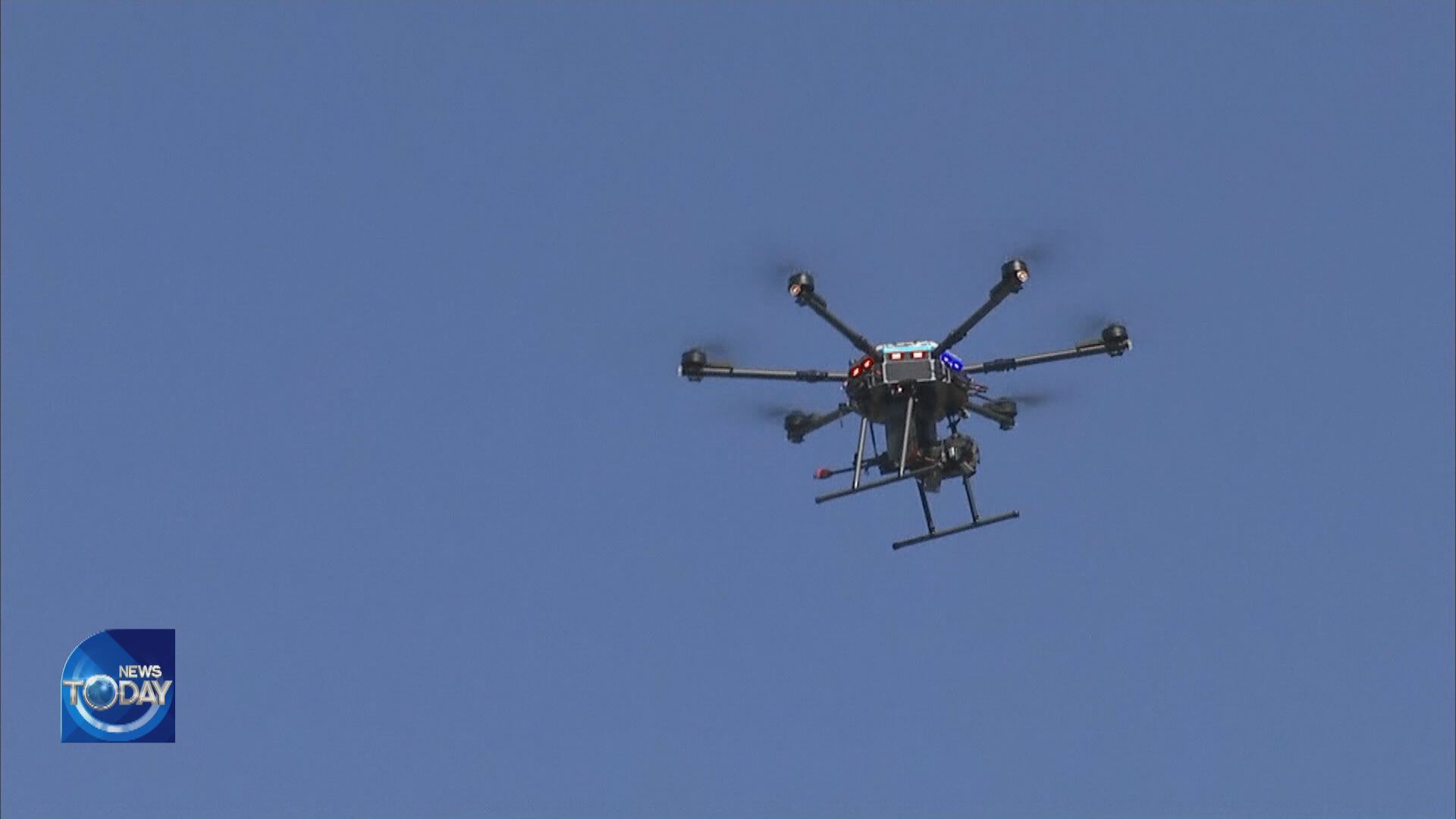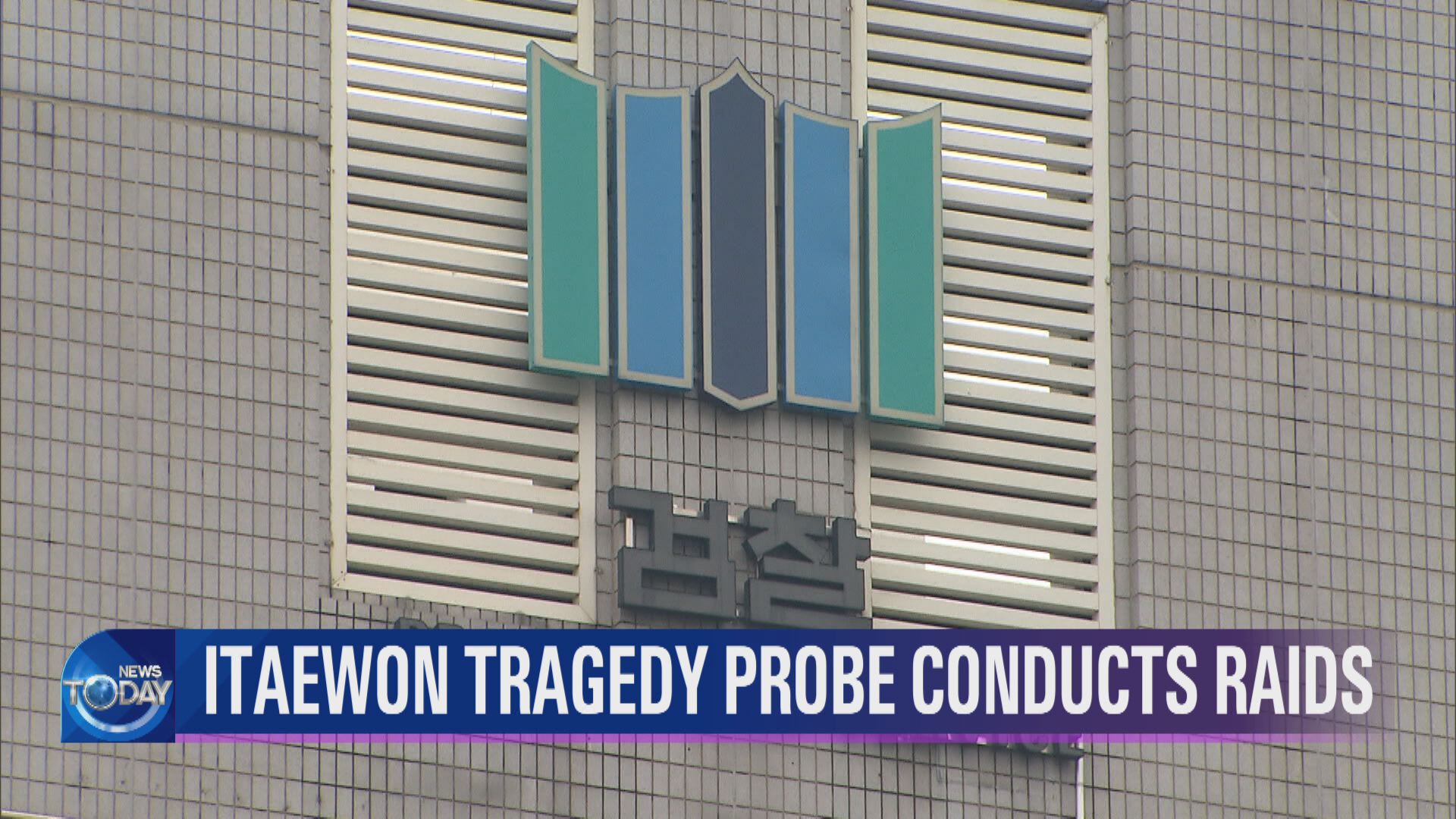UAV JAMMERS SET UP AT MILITARY BASES
입력 2023.01.10 (15:00)
수정 2023.01.10 (16:45)
읽어주기 기능은 크롬기반의
브라우저에서만 사용하실 수 있습니다.
[Anchor Lead]
Concerns over civilian damage was one of the reasons why the military couldn't deploy attack helicopters to shoot down North Korea's UAVs. With antiaircraft guns showing low accuracy rates, Jammers, designed to disturb UAV's radio signal and GPS to cause them to crash, are what's needed in times like this, however, no military units in South Korea are equipped with equipment. It has been found that the military recently deployed private jammers to units in an emergency move, after borrowing them from major energy-related state companies.
[Pkg]
A UAV loses its direction and goes down as its radio signals are disturbed. A device installed on the roof of a building automatically detects a flying UAV and blocks its radio signals. Jammers are designed to disturb a UAV's radio signal and GPS to cause them to crash. But in South Korea, no military units are equipped with them, because devices that meet the operational performance required by the military have not been developed. The military is known to have deployed private jammers to units in an emergency move, following the recent intrusion by North Korean UAVs. About 10 jammers are reportedly installed at the First Army Corps and the Capital Corps as well as some front-line units. Where did these jammers come from? They were reportedly provided by major energy-related state companies and facilities, including the Korea Hydro and Nuclear Power Corporation and power plants. A senior military official said military units asked the state facilities to lend the jammers as per the order of the Ground Operations Command. The official added more have been borrowed from the private sector and are being installed at some bases. The official explained the jammer installations are partly for supplementing current limits in shooting down enemy UAVs. Another goal is to carry out combat tests and identify what functions they possess for military use. The military originally planned to develop military jammers by January 2026, but it has pushed forward the timeline after the North Korean UAVs' intrusion.
Concerns over civilian damage was one of the reasons why the military couldn't deploy attack helicopters to shoot down North Korea's UAVs. With antiaircraft guns showing low accuracy rates, Jammers, designed to disturb UAV's radio signal and GPS to cause them to crash, are what's needed in times like this, however, no military units in South Korea are equipped with equipment. It has been found that the military recently deployed private jammers to units in an emergency move, after borrowing them from major energy-related state companies.
[Pkg]
A UAV loses its direction and goes down as its radio signals are disturbed. A device installed on the roof of a building automatically detects a flying UAV and blocks its radio signals. Jammers are designed to disturb a UAV's radio signal and GPS to cause them to crash. But in South Korea, no military units are equipped with them, because devices that meet the operational performance required by the military have not been developed. The military is known to have deployed private jammers to units in an emergency move, following the recent intrusion by North Korean UAVs. About 10 jammers are reportedly installed at the First Army Corps and the Capital Corps as well as some front-line units. Where did these jammers come from? They were reportedly provided by major energy-related state companies and facilities, including the Korea Hydro and Nuclear Power Corporation and power plants. A senior military official said military units asked the state facilities to lend the jammers as per the order of the Ground Operations Command. The official added more have been borrowed from the private sector and are being installed at some bases. The official explained the jammer installations are partly for supplementing current limits in shooting down enemy UAVs. Another goal is to carry out combat tests and identify what functions they possess for military use. The military originally planned to develop military jammers by January 2026, but it has pushed forward the timeline after the North Korean UAVs' intrusion.
■ 제보하기
▷ 카카오톡 : 'KBS제보' 검색, 채널 추가
▷ 전화 : 02-781-1234, 4444
▷ 이메일 : kbs1234@kbs.co.kr
▷ 유튜브, 네이버, 카카오에서도 KBS뉴스를 구독해주세요!
- UAV JAMMERS SET UP AT MILITARY BASES
-
- 입력 2023-01-10 15:00:32
- 수정2023-01-10 16:45:07

[Anchor Lead]
Concerns over civilian damage was one of the reasons why the military couldn't deploy attack helicopters to shoot down North Korea's UAVs. With antiaircraft guns showing low accuracy rates, Jammers, designed to disturb UAV's radio signal and GPS to cause them to crash, are what's needed in times like this, however, no military units in South Korea are equipped with equipment. It has been found that the military recently deployed private jammers to units in an emergency move, after borrowing them from major energy-related state companies.
[Pkg]
A UAV loses its direction and goes down as its radio signals are disturbed. A device installed on the roof of a building automatically detects a flying UAV and blocks its radio signals. Jammers are designed to disturb a UAV's radio signal and GPS to cause them to crash. But in South Korea, no military units are equipped with them, because devices that meet the operational performance required by the military have not been developed. The military is known to have deployed private jammers to units in an emergency move, following the recent intrusion by North Korean UAVs. About 10 jammers are reportedly installed at the First Army Corps and the Capital Corps as well as some front-line units. Where did these jammers come from? They were reportedly provided by major energy-related state companies and facilities, including the Korea Hydro and Nuclear Power Corporation and power plants. A senior military official said military units asked the state facilities to lend the jammers as per the order of the Ground Operations Command. The official added more have been borrowed from the private sector and are being installed at some bases. The official explained the jammer installations are partly for supplementing current limits in shooting down enemy UAVs. Another goal is to carry out combat tests and identify what functions they possess for military use. The military originally planned to develop military jammers by January 2026, but it has pushed forward the timeline after the North Korean UAVs' intrusion.
Concerns over civilian damage was one of the reasons why the military couldn't deploy attack helicopters to shoot down North Korea's UAVs. With antiaircraft guns showing low accuracy rates, Jammers, designed to disturb UAV's radio signal and GPS to cause them to crash, are what's needed in times like this, however, no military units in South Korea are equipped with equipment. It has been found that the military recently deployed private jammers to units in an emergency move, after borrowing them from major energy-related state companies.
[Pkg]
A UAV loses its direction and goes down as its radio signals are disturbed. A device installed on the roof of a building automatically detects a flying UAV and blocks its radio signals. Jammers are designed to disturb a UAV's radio signal and GPS to cause them to crash. But in South Korea, no military units are equipped with them, because devices that meet the operational performance required by the military have not been developed. The military is known to have deployed private jammers to units in an emergency move, following the recent intrusion by North Korean UAVs. About 10 jammers are reportedly installed at the First Army Corps and the Capital Corps as well as some front-line units. Where did these jammers come from? They were reportedly provided by major energy-related state companies and facilities, including the Korea Hydro and Nuclear Power Corporation and power plants. A senior military official said military units asked the state facilities to lend the jammers as per the order of the Ground Operations Command. The official added more have been borrowed from the private sector and are being installed at some bases. The official explained the jammer installations are partly for supplementing current limits in shooting down enemy UAVs. Another goal is to carry out combat tests and identify what functions they possess for military use. The military originally planned to develop military jammers by January 2026, but it has pushed forward the timeline after the North Korean UAVs' intrusion.
이 기사가 좋으셨다면
-
좋아요
0
-
응원해요
0
-
후속 원해요
0












![[속보] 순직 해병 특검 “오늘 오후 박정훈 대령 참고인 조사”](/data/layer/904/2025/07/20250716_MUM2IP.jpg)

![[단독] 김건희 특검, ‘공천 개입’ 관련 김영선 전 의원 소환 통보…일정 조율 중](/data/news/2025/07/16/20250716_p7hDHF.jpg)


이 기사에 대한 의견을 남겨주세요.